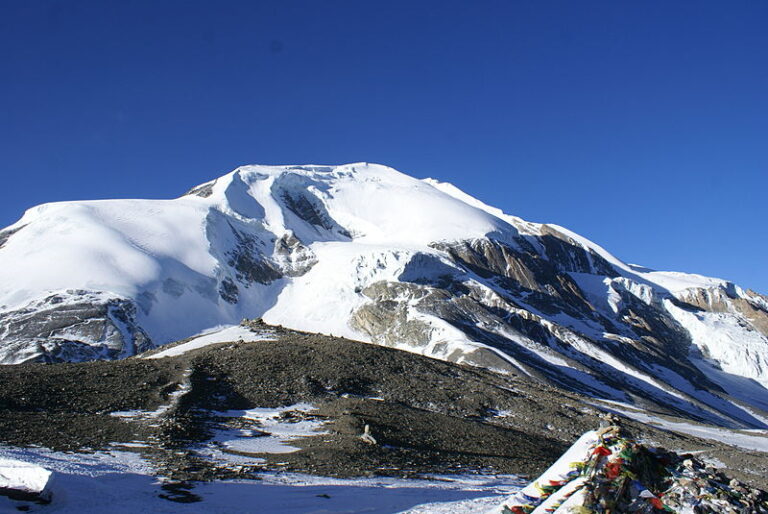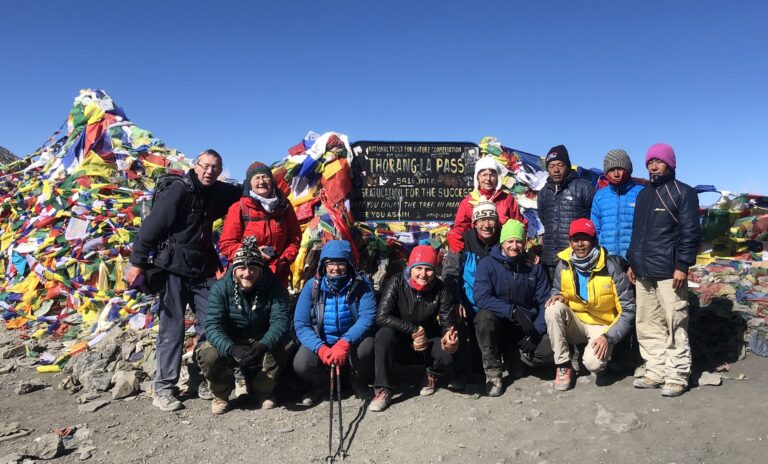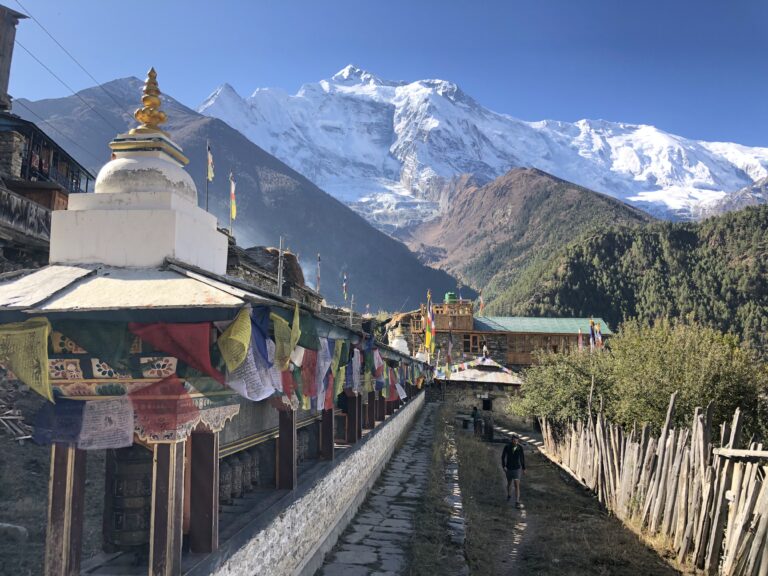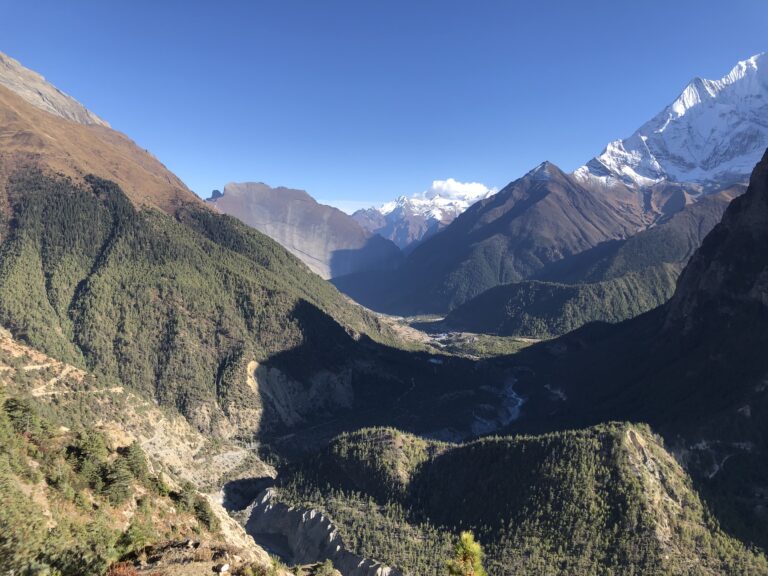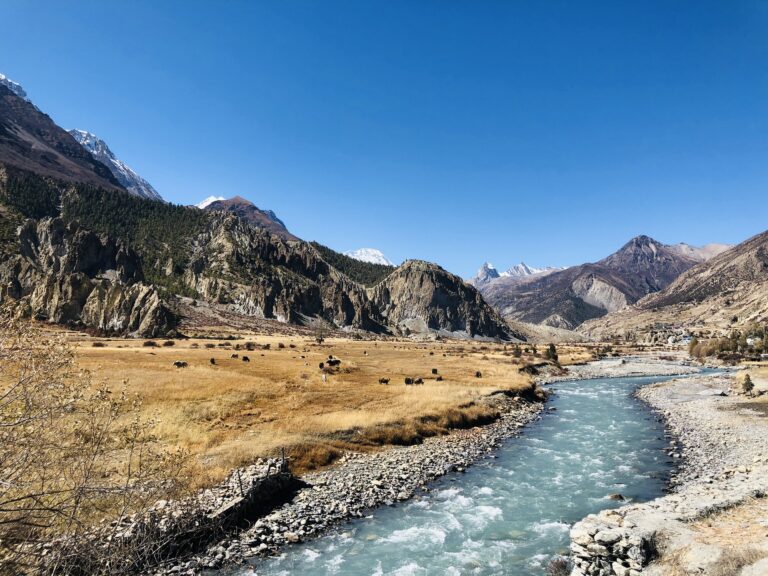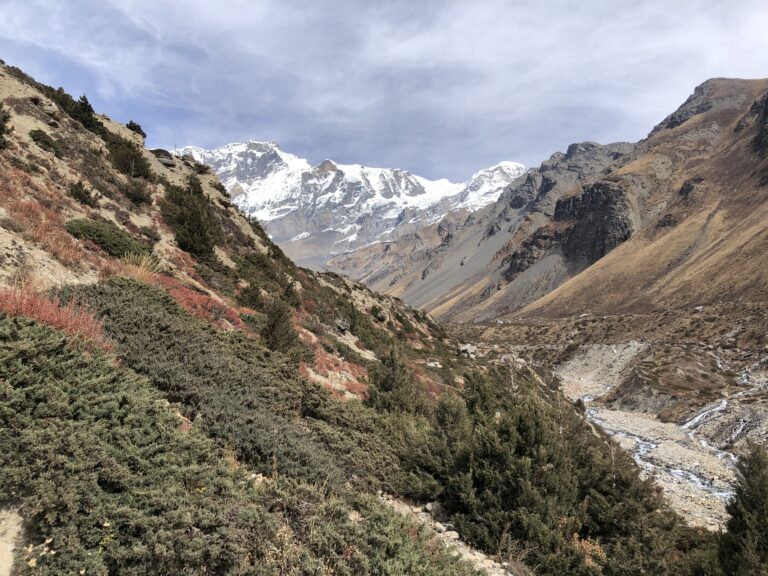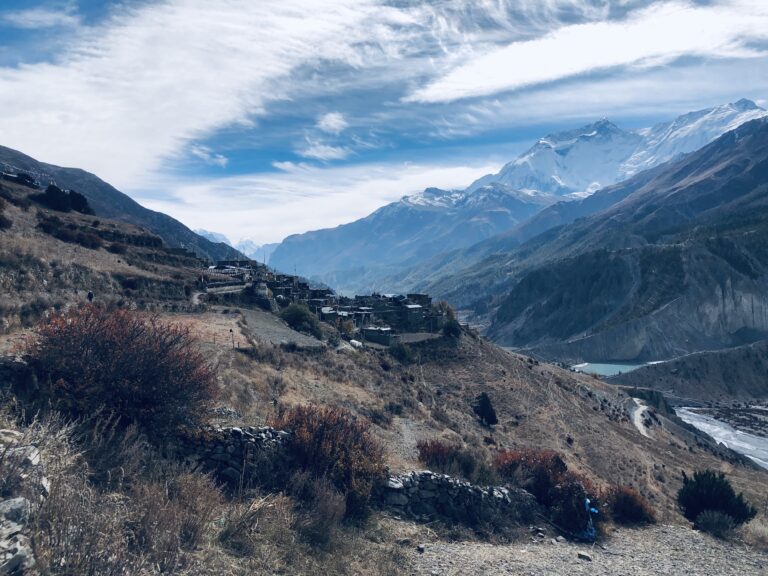Day 01 – we will pick you up from the Tribhuwan international airport on your arrival date and escort to the hotel. Your hotel will be the center of the Thamel; which is one of the tourist hubs of Kathmandu city.
Day 02 – sight trip to the ancient and historical places of Kathmandu valley such as Pashupatinath temple, Baudhanath Stupa, Patan Durbar Square and Swayambhunath; which is also known as monkey temple. After the exploration of these places, you will return back to the hotel and your guide will brief you about the trekking trip, trekking gears, and over the related topics for you.
Day 03 – Drive to Besisahar and trek to Bhulbhule (840m.a.s.l) – 06 hours drive and 03 hours walk – Besisahar is 175 kilometers far from Kathmandu city so you guys have to drive about 6 hours to get there. While heading to Besisahar you will have beautiful views of green hills, waterfalls, agricultural terraced field, and dozens of towns and villages; which are settled beside the Trisuli River and over the vertical land. You will have our lunch in Besisahar and trek continuously to Bhulbhule village; which may take approximately two hours or a little bit more depending on your walking speed. Begins of the trek we will walk 45 minutes on the road then you will take an alternative trail to get Bhulbhule village with the view of agricultural terraced field, green forest, rugged rocky hills, and the beautiful view of Marshyangdi river valley.
Day 04 – Trek to Ghermuphat (1130m.a.s.l) – 6 hours walk – Begin of the trek; you will walk on the flat trail an approximately two hours to get upper Ngadi village then the trail gently ascends to the Bahundanda where you will stop for the lunch. After lunch you will head towards Ghermuphat; which is three hours further than Bahundanda. The trail leads you through the paddy-terraced field with an awesome view of rocky hills, waterfalls, the neighboring village of Bahundanda, and Ghermuphat. There are half dozens of guesthouses in Ghermuphat which offers comfortable bed and organic meals grown their own farm.
Day 05 – Trek to Tall (1700m.a.s.l) – 6 hours walk – From the yard of the guest house you will walk downhill trail for 30 minutes to get Shyage village then you will be again on the motor road until Chyamche village because there isn’t any alternative trail. When you reach Chyamche village you will have your lunch with the view of huge waterfalls called Chyamche waterfalls and wild honeycombs; which are hanging over the huge cliff. From here; you will head towards Tall village taking by NATT (New Annapurna trekking trail) trail pass by sat tale village with the view of waterfalls, Marshyangdi river valley, and rocky hills which are standing our both hand side.
Day 06 – Trek to Timang (2400m.a.s.l) – 6 hours walk – Begins of the morning; you will follow the Marshyangdi River until Danaque village so the walks would be very pleasant due to walk on the flat and gradual. There are half dozens of villages between Tall and Timang village which are inhabitant by the Gurung and Tibetan people and religiously they are Buddhist so you can see some of the monasteries, Chhortens, Mani walls and Kani gates. You will have your lunch in Danaque village then have to climb up about two hours to get Timang village that offers you to see a stunning view of Manaslu 8163 meters to the south and stunning view of Namun peak to the north.
Day 07 – Trek to Dhukur Pokhari (3060m.a.s.l) – 06 hours walk – The morning purpose to see the magnificent view of Manaslu and Namun peak from the table of breakfast so it would be one of the joyful morning of the trip. After breakfast you will head towards Dhukur Pokhari; which is 3060 meters high above the sea level and takes about 06 hours to get there. The trail ascends gradually pass by Thanchowk, Koto, Chame, Talekhu, and Bhratang villages with the astonishing view of Lamjung Himal 6983 m, Annapurna II 7937 meters and charms landscapes. There are dozens of guest houses in Dhukur Pokhari and provides a comfortable bed, meals, and drinks.
Day 08 – Trek to Ngawal village (3660m.a.s.l) – 6 hours walk – There are two trails to get Ngawal village called lower and upper trail. Comparatively, the upper trail is better than lower due to better views.you will turn to the right-hand side and the trail leads you through the huge grassy land with a stunning view of Annapurna two, Swargadwari Himal, Chulu peak and Pisang peak. After an hour walk appear the upper Pisang village where you will do second tea break to have a fascinating view of high Himalayas and to explore a beautiful monastery which is situated top of the Upper Pisang village. From here you have to walk another 30 minutes on the flat trail to get small suspension bridge then the trail gently ascends to the Ghyaru village which would be bitter climb but still offers to see all of the Annapurna mountain ranges as Annapurna Two, Annapurna three, Annapurna four, Pisang peak, Gangapurna, Khangshar Kang, Glacier Dome, Tilicho peak, Chulu peak and beautiful Manang valley.
Day 09 – Trek to Manang (3550m.a.s.l) – 05 hours walk – From here; you have two options to choose trail either lower or upper trail but still recommended trail is to choose upper trail because upper trail commands to see better mountain views. The trail passes through a small village known as Julu; which is probably the smallest village of the Annapurna region, consisting of 5 households. Trek from Ngawal to Manang takes about 05 hours and offers to see a panoramic view of Annapurna II, III, IV, Gangapurna, Chulu peak, Tilicho peak, Linga peak, Tarkekang, Glacier dome, Pisang peak and as well as far view of Manaslu. We will have our lunch in Bhraka village where we also can explore an old and beautiful monastery.
Day 10 – Day trip to (Ice lake 4600m.a.s.l) – 7 hours trip – Normally trekkers spend two nights in Manang to do acclimatization. There are many sight trips around the Manang valley. Among of them sight trips to Ice-lake is being very popular sight walk; which is a beautiful glacial lake, situated the north side of the Manang and Bhraka village an elevation with 4600 meters high from the sea level and commands to the trekkers to see the panoramic view of Annapurna two, Annapurna three, Annapurna four, Gangapurana, Tarkekang, Tilicho peak, Lamjung Himal, Pisang peak, Chulu peak, Manaslu and the awesome view of Manang valley. There are two trails to go Ice lake either from Manang or from Bhraka village but both trails are bitter uphill and may take approximately four hours to reach the Ice Lake.
Day 11 – Trek to yak kharka (4100m.a.s.l) – 04 hours walk – you will head towards yak kharka ascending by the Gradual trail through the Tanki Manang and Gunsang village. The pleasant walk from Manang to Yak Kharka offers to see a panoramic chain of Annapurna ranges including Gangapurna, Pisang peak, Chulu peak, Thorong peak, Tarke Kang, Tilicho Peak, Khangsar Kang, Glacier Dome and its beautiful ranges.
Day 12 – Trek to Thorong Phedi (4450m.a.s.l) -3:30 hours – Thorong Phedi is not so far from Yak kharka but still it takes approximately three and half hours to get there due to high elevation where you may feel shortness of your breath. The trail ascends gradually to Thorong Phedi pass by a village called Ledar and a teashop. You will cross once the Thorong River and appear a teashop where you can sip some hot drinks then 45 minutes walk brings you to Thorong Phedi. There is a landslide between the teashop and Thorong Phedi so you have to pay big attention to safe with falling rocks. You will have your lunch in Thorong Phedi and if you are still fit and fine then you can head towards Thorong high camp which may take another one and twenty minutes.
Day 13 – Trek to Thorong peak base camp (5505 m.a.s.l) and trek down to Ranipauwa – 5 hours walk – you will start your trek earlier than previous days due to climb until Thorong peak base camp which may take approximately 4 hours will depend on your walking speed and health conditions. While you heading to Thorong base camp you can see beautiful snow-capped peaks known as Yakawakang, Series of Chulu, Yingyang, Purkung, Purbung, and its beautiful ranges and glaciers. You will be in Thorong base camp at lunchtime so plenty of time to do Jumaring and used to all belonging gear.
Day 14 – Summit of Thorong peak and trek down to Ranipauwa village (38070 m.a.s.l) – 4 hours walk – After breakfast in Thorong Base camp; you will descend almost 1700 meters to reach Muktinath or Ranipauwa village which may takes approximately 4 hours.Throng base camp ross over the Thorong-La pass and long walk down to Ranipauwa village. From today you will be entering another valley called Kali Gandaki valley which is also known as Lower mustang and offers to see different landscapes, mountains including one of the top ten mountains of the world know as Dhaulagiri 8167 meters tall. There are numerous of good guesthouses in Ranipawa village and possible to have comfortable attached bathroom with running hot shower.
Day 15 – Trek to Kagbeni Via Jhong Putak (2820.a.s.l.) – 5 hours walk – There is a very popular Hindu pilgrimage site in Ranipauwa village called Muktinath temple where can be seen 108 taps, holy pool, and natural flaming gas inside the monastery so early in the morning you will visit the shrine and head down to Kagbeni village via Chyonkar, Jhong and Putak villages which are historical and ancient settlements and a part of the restricted area of Upper mustang but still you can walk with normal trekking permit for one day. Trek from Ranipauwa to Kagbeni would be really impressive due to walk on the deserted land, exploration of old monasteries, ruined old royal palace, and the stunning view of Nilgiri, Thapa peak, Tukuche peak, Muktinath peak, Thorong peak, Yakawakang peak and Dhaulagiri. You will have our lunch in Kagbeni after that you will explore the Kagbeni village; which offers to see old monastery and amazing houses, made of clay, wooden log, and stones.
Day 16 – Trek to Jomsom (27o0m.a.s.l) – 3 hours walk – After an early breakfast in Kagbeni we will start our trek following by the Kali Gandaki river to get Jomsom village, also known as windy valley because later in the afternoon blows very strong wind. After three hours of walk, you will be in the Jomsom and you can do deep rest with a sip of organic coffee might be some beverage to wait for flight of the next morning.
Day 17 – Fly back to Pokhara – you will fly for 30 minutes to get Pokhara. The flight offers you to have an astonishing view of Nilgiri, Thapa peak, Tukuche peak, Machhapuchree, south Annapurna, Mardi Himal, Annapurna II, III, IV, Gangapurna, Tilicho peak and some of top ten mountains of the world called Annapurna I 8091m, Manaslu 8163m, and Dhaulagiri 8167 meters tall.
Day 18 – Rest day in Pokhara – Today you will hang around Lakeside and beside the Phewa Lake by yourself or visit massage center to heal up your tired body and muscles.
Day 19 – Fly back to Kathmandu and depart to the homeland – Today, you will fly back to Kathmandu and continue to Homeland with great experience of the climb, Nepalese culture, traditions and nature views that make you a storyteller among your friends, family and colleagues.
